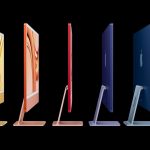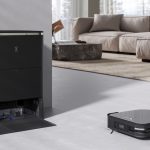The South Sydney Juniors is introducing Australia’s most advanced head injury protocols with new technology that has the potential to change how rugby league handles player concussion and recovery.
This is something that’s touched my family in a big way with my brother Mario now suffering the effects of 16 seasons of first grade.
While he’s physically fit and healthy, Mario’s brain isn’t because of the numerous head knocks he copped in his long career.
The effects of concussion – short term and long term – are still not fully understood in contact sports around the world but a revolutionary concussion management technology called NeuroFlex is set to change all that.
NeuroFlex uses virtual reality technology connected to a powerful laptop to perform a series of eye-tracking and head movement tests to assess your brain health.
Players can perform a NeuroFlex test in about eight minutes to establish a baseline – a data set that will show what their brain looks like in its healthy state.
If the player subsequently suffers a head knock, they can be retested with NeuroFlex to accurately assess the full effects of the concussion and to see how much their new test data differs from their baseline.
This objective and accurate data can be used by teams to create a personal recovery plan so the player can make a safe return to the field.
I’ve done the test and it involves following a series of dots within the VR headset with your eyes and head.

NeuroFlex has already been successfully trialled in the South Australian Football League, the 2023 Super Rugby Union competition and the 2022 FIFA Men’s World Cup.
It is currently being trialled by British horse racing with jockeys required to undergo a NeuroFlex test and provide a baseline score at the start of every race meeting.
The South Sydney Juniors will be introducing NeuroFlex to rugby league for the very first time.
“We are excited to provide our community with the opportunity of base line testing. It will provide parents and players a peace of mind for when they can return to play or other activities,” said South Sydney Juniors President, Keith McCraw.
The reason I’m involved with this initiative is the fact that I played in the Souths Juniors from the age of five, I went on to play for the South Sydney Rabbitohs and, as a tech journo, I understand and can explain the NeuroFlex technology.
And because my brother Mario is suffering the effects of concussion after 16 years in first grade.
I am part of the working group to set up the South Sydney Juniors Foundation and one of the five pillars of the foundation is Concussion Awareness and Return to Play Program which is where NeuroFlex comes in.
The other pillars are: The Junior Bunnies Academy, Elite Player Development, Female Participation and Pathways and the Souths Juniors A Grade Competition.
South Sydney Juniors, one of Australia’s only organisations to cover all costs to make it possible for any boy or girl to play rugby league, will be rolling out the NeuroFlex technology in 2023.
Up to 3,000 players 12 years and older in the South Sydney Juniors will undergo a baseline test using NeuroFlex free of charge.
The tests will also be available to players under 12 if they choose to take it.
And to be clear, South Sydney Juniors is not rolling out this new safety technology as a knee-jerk reaction to a sudden increase in head injuries in the junior grades.
Far from it. On average in the Souths Juniors there have been 40 head injury notifications each year in the last five years, and this includes cuts and other non-concussive injures from 90 games between 180 teams and 3,100 players each week for 15 weeks.

Fans remember my brother Mario as one of the toughest and most passionate players ever to lace on a boot in the NRL.
When he was playing there was no real protocols around head knocks and the assessment of concussions.
Back then if you had a head knock or got knocked out, you were expected to get up and soldier on.
That was considered courageous thing to do.
But with the benefit of hindsight and advances in technology we now know that was one of the most dangerous things you can do.
If this technology existed when Mario was playing, his life would be completely different today.
And his family’s life would be different too because he now relies on them to care for him and help him remember things.
When I meet up with Mario for one of our regular catch-up coffees, he was his usual colourful self and every second person wanted to come up and say hello to him.
But he might ask me how my kids are twice in the space of 10 minutes or how my work is going three times.
And I would answer as if it was the first time he was asking me.
Recently Mario met me for coffee at Westfield Eastgardens and he’d forgotten that this wife Rebecca had dropped him off.
After we finished, I found him wandering around the car park where he was looking for his car even though he didn’t drive to get there. I ended up driving him home.
The NRL now has HIA (head injury assessment) – a period when a player who has suffered head knock must undergo a series of tests to show whether they’re still fit to continue playing.
The tests involve a player following a finger being waved in front of them and remembering a series of words.
It’s not the most accurate assessment and the results can be subjective to the person performing the test.
NeuroFlex would be able to take over that testing and complete it well within the 15-minute period where the player must remain off the field.
The results could also then be compared to the player’s baseline score to instantly see if there is any sizeable variation to assess the level of concussion more accurately.
NeuroFlex could be used to monitor player recovery after an MTBI (mild traumatic brain injury).
These post-concussion assessments rely on a player’s honesty to help make a call on when to come back and play.
What’s to stop a player lying about a lingering headache so they can get back on the field faster.
With NeuroFlex it takes away all the guesswork and ensures a player doesn’t return sooner than they should.
That’s what my brother Mario did.
Being the competitive player he is, Mario didn’t want to miss a single game.
His brain wasn’t given enough time to return to a healthy state before he went back to play the following week.
If that keeps happening the damage to your brain can’t be repaired – it’s permanent.
There has been talk in the NRL to change the rules of the game to combat the issue of head injuries.
One change suggested by the NRL for the juniors was abolishing tackling until the age of seven and only having competitive matches 13 years and older.
South Sydney Juniors was the first to vehemently oppose these changes and has since been supported in their stance by every other junior league organisation.
Adopting a technology like NeuroFlex means clubs can take a proactive approach to the issue of head injuries and assessment rather than a reactive one.
With the knowledge that NeuroFlex provides, it is now possible to paint an accurate picture of a player’s brain health and, if they suffer a head knock, they can see the variations when compared to their baseline.
This helps clubs make a more informed decision when determine when a player can return to play again.
There are already protocols in place which vary club to club and sport to sport.
NeuroFlex is not about keeping players on the sideline.
“NeuroFlex is a tool that provides us with objective information that guides some of our most effective treatments that involve the vestibular system, vision and the neck. This information is provided within minutes making it possible to screen and assess more people than ever before,” said Associate Professor James McLoughlin.
The data from a NeuroFlex test could actually show a player could return to player sooner than some mandatory 14-day standdown periods.
There have been several players in the NRL including Luke Keary from the Roosters and Newcastle’s Kayln Ponga who had suffered a series of worrying head knocks that made them consider their future in the game.
With a technology like NeuroFlex, they could have found a mountain of information from the tests to show them the true extent of the damage, if any.
At the very least NeuroFlex can provide peace of mind knowing you have all the information you need to make the right choice about playing or sitting the game out.
That’s true for everyone whether you’re the parent of a young player starting out or an experienced first grader.










